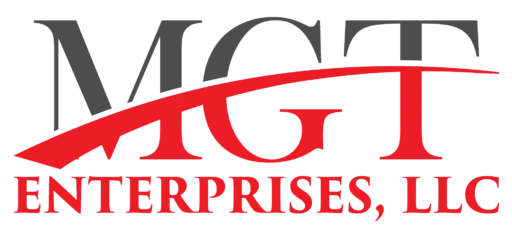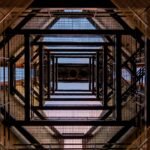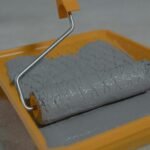When it comes to commercial and residential construction, safety is a non-negotiable priority. Among the most critical safety concerns is fire resistance. The ability of a structure to withstand and slow the spread of fire is crucial during the material selection during the construction of every element. One of these elements is framing. Metal framing, particularly steel, plays a vital role in enhancing fire resistance in modern building projects.
While you may already know about its durability and structural strength, its fire performance is often overlooked or misunderstood. Hence, in this in-depth guide, we explore how metal framing contributes to fire safety, the materials and ratings involved, compliance with codes, and how it compares to traditional wood framing in terms of fire resistance.
Why Fire Resistance Matters in Construction?
Fires not only put lives at risk but also cause extensive property damage, insurance claims, and business interruption. In commercial buildings, educational institutions, hospitals, and multi-family homes, ensuring proper fire-rated assemblies can save lives and reduce liability in many forms.
The framing material, which is often hidden behind walls and ceilings, plays a major role in how a building reacts under fire conditions. Hence, choosing a framing system with superior fire resistance can improve containment, evacuation time, and the building’s overall fire rating.
How Steel Performs in a Fire
Steel is a non-combustible material, meaning it does not ignite, burn, or contribute fuel to a fire. However, it does conduct heat and can weaken at extremely high temperatures. This dual nature makes understanding its fire behavior essential. Here is the behaviour of steel under heat to understand its properties in detail:
- Non-combustibility: Steel won’t ignite or produce smoke or toxic gases when exposed to flames.
- Structural integrity: At temperatures above 1,100°F (593°C), steel begins to lose about 50% of its strength.
- Deformation risk: Without adequate protection, steel can bend or collapse under high heat, even if it doesn’t catch fire.
How to Enhance the Fire Resistance of Metal Framing?
As you can see, there are some drawbacks to steel framing in extreme temperatures. However, there are ways you can counter these effects efficiently to enhance the fire resistance properties. Builders and construction workers often use different strategies, some of which are:
- Fire-Rated Gypsum Board
Wrapping steel framing with multiple layers of fire-rated gypsum board (Type X or Type C) delays heat transfer.
- Spray-Applied Fire-Resistive Materials (SFRMs)
Often used in commercial structures, SFRMs provide thermal insulation to steel components.
- Intumescent Coatings
These special paints expand when exposed to high heat, creating a protective char layer around the steel.
- Encasement in Concrete or Masonry
In some buildings, steel studs or beams are encased in concrete to improve fire resistance and structural integrity.
These measures allow steel framing systems to meet or exceed required fire ratings for different building types.
Understanding the Fire Resistant Standards in the USA
In the U.S., fire resistance is measured by how long a building assembly (wall, floor, ceiling) can contain a fire, support its load, and prevent heat transmission. Common ratings are 1-hour, 2-hour, or 3-hour fire resistance.
- ASTM E119 (UL 263): This test standard determines how long a system can resist fire exposure.
- UL-listed assemblies: Metal framing systems are often tested and listed by UL (Underwriters Laboratories) with specific ratings.
- IBC Compliance: The International Building Code (IBC) outlines fire resistance requirements for different occupancy types and building heights.
It’s crucial for architects and builders to specify components and assemblies that comply with these ratings.
Comparison of Metal Framing vs. Wood Framing for Fire Resistance
Metal and wood work differently under high temperatures. As we know, wood is highly combustible and can easily catch fire. Metal, on the other hand, withstands high temperatures better but can heat up due to high conductivity. Both have their pros and cons. Below is the comparison table to compare their features:
| Feature | Metal Framing | Wood Framing |
| Combustibility | Non-combustible | Combustible (fuel for fire) |
| Smoke/Toxic Gas | None | Produces smoke and gases |
| Fire Spread Potential | Low | High |
| Structural Degradation | Weakens at high heat | Burns and collapses |
| Fire Rating Attainable | Up to 3-hour with assemblies | Limited without treatments |
Overall, metal framing offers a safer base for fire-rated assemblies, especially in commercial or multi-family applications.
Common Applications of Metal Framing for Fire Resistance
- Hospitals and healthcare buildings
- High-rise apartments and hotels
- Schools and universities
- Retail centers and warehouses
- Industrial facilities
These settings often require multiple-hour rated assemblies, making metal framing an ideal choice.
Challenges & Considerations of Metal Framing
While metal framing offers superior fire resistance in many ways, there are still important considerations:
- Thermal bridging: Metal conducts heat, which can transmit heat to other parts of the structure. Insulation and thermal breaks are needed.
- Fireproofing costs: SFRMs and coatings add to upfront costs, though often balanced by long-term safety benefits.
- Design complexity: Some fire-rated assemblies require precise installation of multiple components to achieve certification.
Proper engineering and professional installation are key to meeting required fire ratings.
Example of Mid-Rise Office Building with Metal Framing
A five-story office building in an urban center used cold-formed steel framing for interior and exterior walls. The project called for 2-hour fire-rated corridor walls and 1-hour-rated floor-ceiling assemblies. By incorporating fire-rated gypsum sheathing and SFRM, the building met code requirements without compromising on open space design or structural strength.
This example shows how metal framing can be used creatively while maintaining rigorous safety standards.
Final Thoughts
Fire resistance is a critical factor in today’s building structures, and metal framing offers a strong foundation for achieving safety, compliance, and resilience. While it doesn’t burn, steel must be properly protected against high heat to ensure structural integrity. By understanding how fire ratings work, using appropriate materials, and following tested assemblies, architects and contractors can confidently integrate metal framing into fire-safe building designs.
Metal framing provides peace of mind that your structure meets today’s most stringent fire safety standards when you’re building your office, apartment, hospital, or school.






